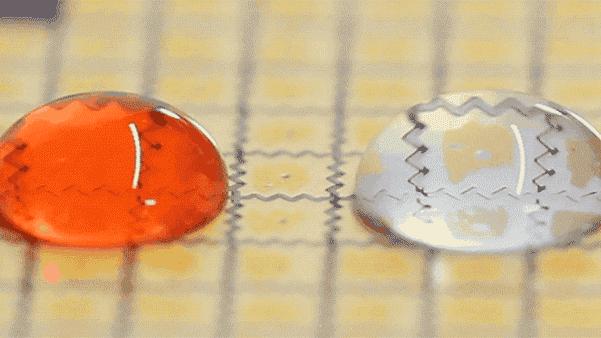mittangiblemediagroup
Latest

MIT researchers turn water into 'calm' computer interfaces
Our lives are busy and full of distractions. Modern computing. with its constant notifications and enticing red bubbles next to apps, seems designed to keep us enthralled. MIT Media Lab's Tangible Media Group wants to change that by crafting "calm interfaces." The Tangible Media Group demonstrated a way to precisely transport droplets of liquid across a surface back in January, which it called "programmable droplets." The system is essentially just a printed circuit board, coated with a low-friction material, with a grid of copper wiring on top. By programmatically controlling the electric field of the grid, the team is able to change the shape of polarizable liquid droplets and move them around the surface. The precise control is such that droplets can be both merged and split. Moving on from the underlying technology, the team is now focused on showing how we might leverage the system to create, play and communicate through natural materials.

ICYMI: Living bacteria clothes, the phone drone and more
#fivemin-widget-blogsmith-image-844876{display:none;} .cke_show_borders #fivemin-widget-blogsmith-image-844876, #postcontentcontainer #fivemin-widget-blogsmith-image-844876{width:570px;display:block;} try{document.getElementById("fivemin-widget-blogsmith-image-844876").style.display="none";}catch(e){}Today on In Case You Missed It: MIT's Tangible Media Group created clothes and shoes partially made of living bacteria that react to sweat by opening small vents in the garment. A new Kickstarter for a drone would use your phone as the camera. And anyone who has had to wait out the confined space torture of having an MRI scan done should be into this news: The first full-body PET scanner is being built. PET scans can also reveal how your body works rather than just images like a MRI, so this is great news for imaging technology in general.

